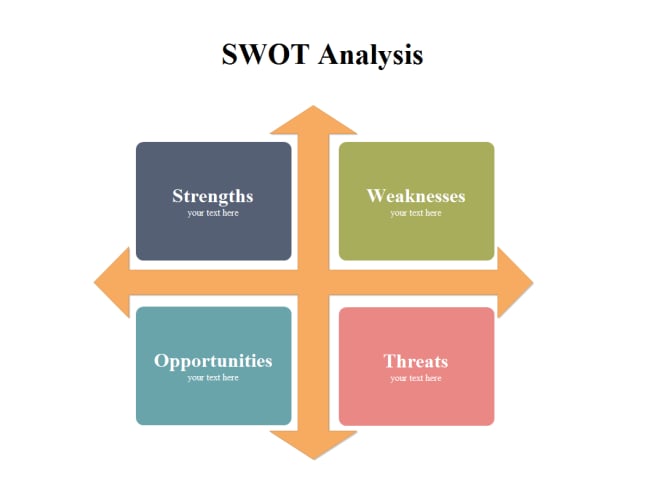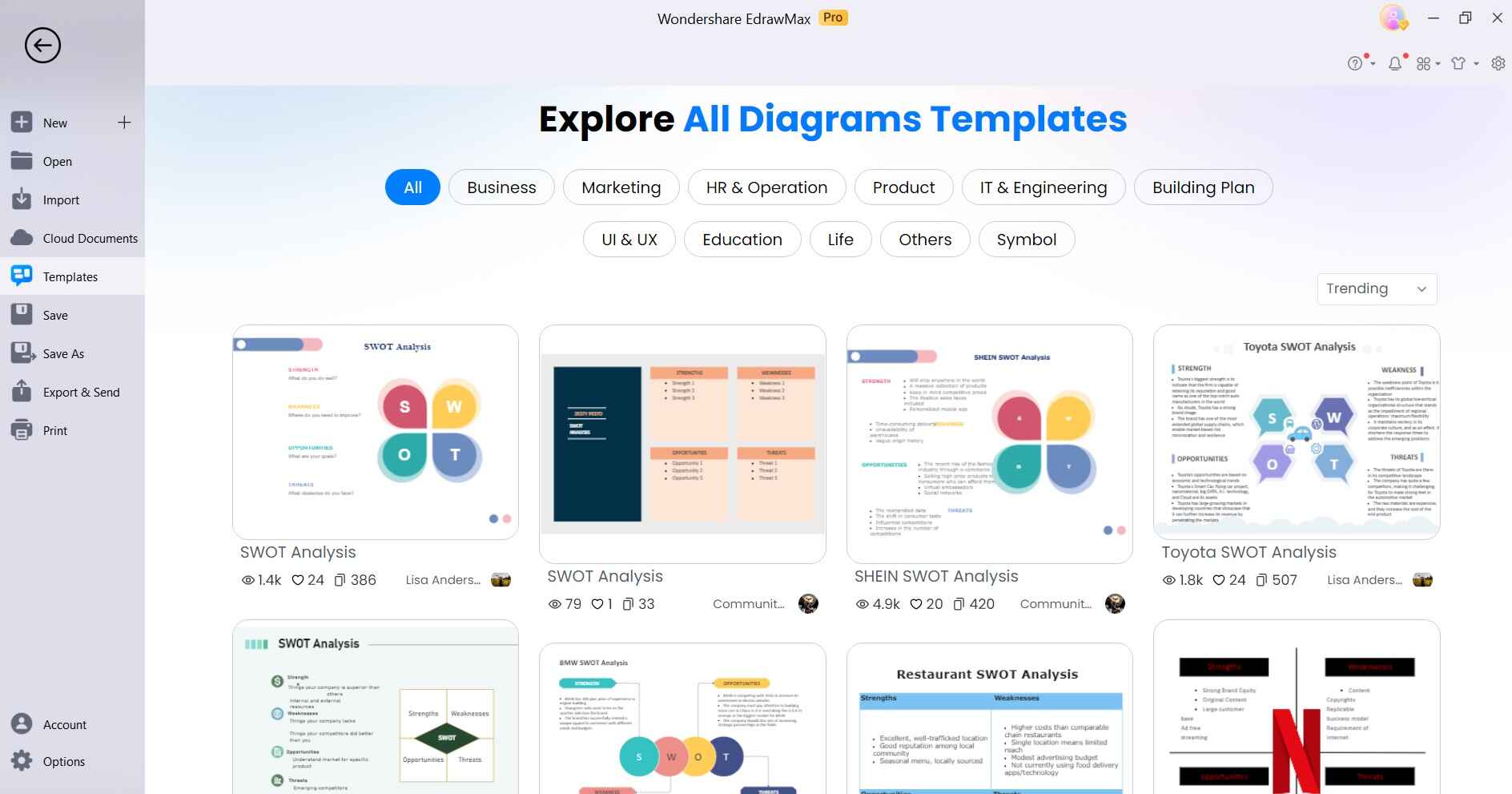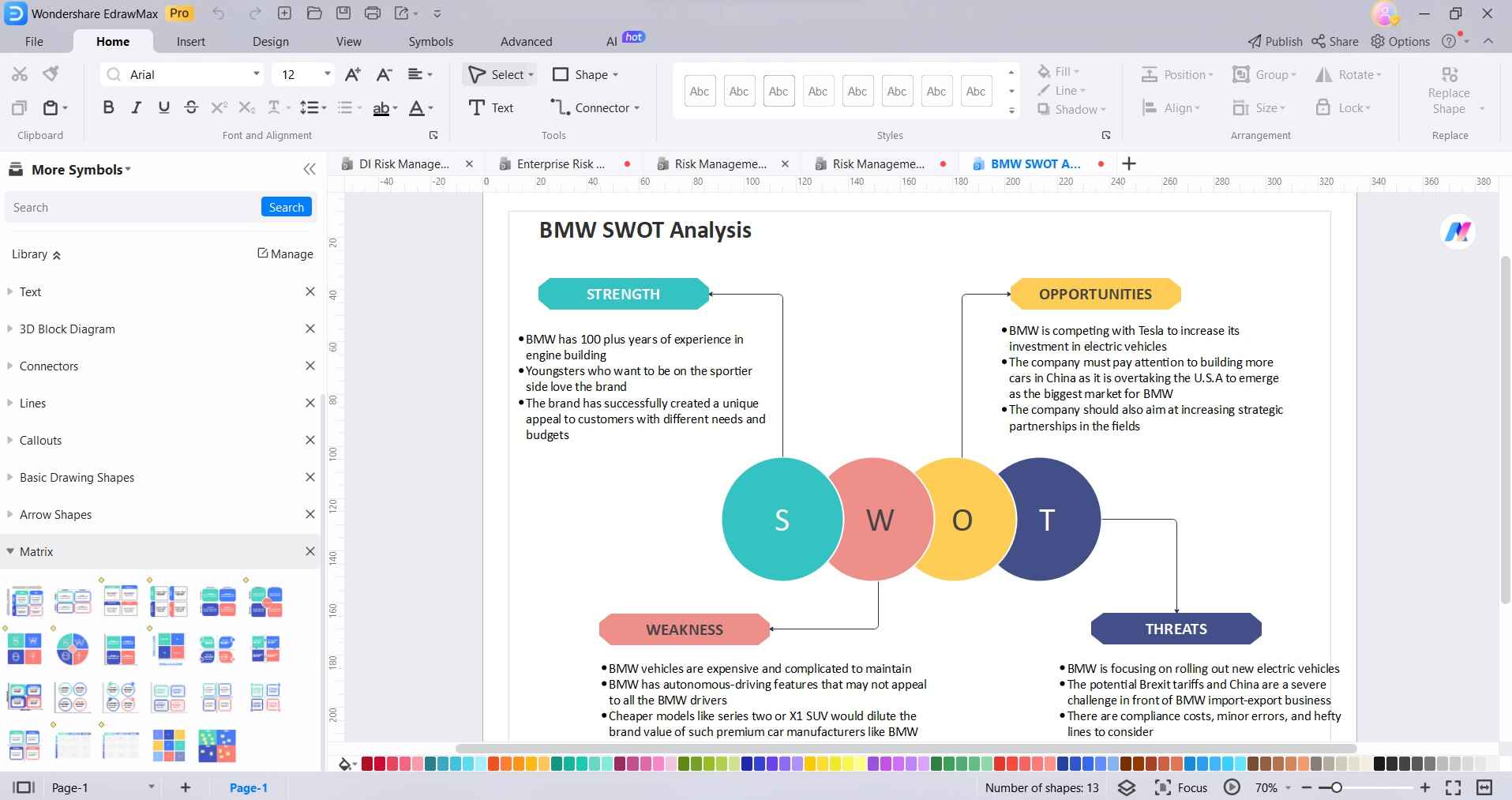In today's unpredictable business landscape, understanding and implementing effective risk assessment strategies are paramount. This comprehensive guide equips you with the tools and insights needed to navigate uncertainties with confidence.
From identifying potential threats to seizing opportunities, discover how strategic SWOT Risk Analysis in risk management can be your greatest ally in making informed decisions and securing sustainable success. Elevate your risk management game to new heights starting now!"
In this article
Part 1: What is SWOT Analysis Risk Management

SWOT Analysis in Risk Management is a strategic tool that helps businesses evaluate their Strengths, Weaknesses, Opportunities, and Threats. It enables a comprehensive understanding of potential risks and benefits associated with a decision or project. By identifying internal strengths and weaknesses, as well as external opportunities and threats, organizations can make more informed choices. This method provides a structured approach to assess and mitigate risks, ultimately enhancing the likelihood of successful outcomes in various ventures.
Part 2: When and How to Use SWOT Analysis for Risk Identification?
SWOT Analysis is invaluable for Risk Identification in various scenarios:
- Market Entry Strategy: Evaluate potential risks and advantages when entering a new market.
- Project Planning: Assess risks associated with timelines, budgets, and resource allocation.
- Product Development: Identify market competition, potential setbacks, and innovation opportunities.
- Financial Decision-Making: Gauge risks in investments, mergers, or acquisitions.
- Crisis Management: Swiftly assess internal strengths and weaknesses to mitigate external threats during crises.
- Strategic Planning: Prioritize risks in long-term business strategies for optimal decision-making.
- Resource Allocation: Determine the best allocation of resources considering potential risks.
Remember, SWOT is a versatile tool adaptable to numerous situations, offering clarity and foresight in risk analysis and risk management.
Part 3: Critical Factors in SWOT Analysis
Here are the essential factors for a successful SWOT analysis:
- Accurate Data: Ensure the information used for analysis is up-to-date and reliable.
- Objectivity: Avoid biases or preconceived notions to maintain an impartial assessment.
- Cross-functional input: Gather insights from various departments for a comprehensive perspective.
- Prioritization: Focus on the most impactful factors to allocate resources effectively.
- Future Outlook: Consider long-term trends and potential shifts in the business environment.
- Actionable Insights: Identify strategies and tactics that can be implemented for positive change.
- Continuous Review: SWOT analysis should be a dynamic process, adapted as circumstances evolve.
- Risk Assessment: Evaluate potential risks associated with each identified factor for robust contingency planning.
Part 4: How to Do a SWOT Analysis Using EdrawMax
Using EdrawMax for SWOT Analysis significantly enhances the process. Its user-friendly interface ensures a clear and organized representation of Strengths, Weaknesses, Opportunities, and Threats, aiding in better comprehension. The platform facilitates seamless collaboration among team members, allowing for real-time contributions and reviews.
EdrawMax offers a range of professional templates designed specifically for SWOT Analysis, streamlining the process and ensuring a structured approach.
Here are the steps to do SWOT analysis risk management using EdrawMax in just a few simple steps:
Step1
Launch EdrawMax on your computer. Browse through the templates and choose a SWOT Analysis template from the 'Risk Management' category.

Step2
Now, Fill in the Sections like Enter the internal strengths of your project or organization, Weaknesses: List the internal weaknesses that need to be addressed, and so on.

Step3
Use the tools in EdrawMax to customize the template, such as changing colors, and fonts, and adding images or icons.

Step4
If working in a team, utilize EdrawMax's collaboration features to invite members for input and review.
Step5
Once you're satisfied with the analysis, save the file in your preferred format (e.g., PDF, PNG, etc.). Regularly revisit and update the SWOT analysis to adapt to changing circumstances.

By following these simple steps, you can efficiently perform a SWOT Analysis Risk Management using EdrawMax.
Part 5: Importance of Financial Analysis and Risk Management
Financial Analysis and Risk Management are two indispensable pillars that form the foundation of a robust and thriving business. Their roles extend far beyond mere numerical scrutiny; they are essential for the long-term sustainability and growth of any enterprise.
Financial Analysis, often regarded as the heartbeat of a business, involves a comprehensive evaluation of financial statements, cash flows, and key performance indicators. This intricate examination unveils a company's fiscal health, presenting a clear picture of its strengths and weaknesses.
Risk Management stands as the sentinel guarding the financial fortress of a business. It diligently assesses potential threats and uncertainties that loom on the horizon. These may range from market volatility and economic fluctuations to operational hazards and regulatory changes. It encourages a forward-thinking approach, where potential risks are identified, analyzed, and addressed before they escalate into crises.
Part 6: Tips for Creating an Effective SWOT Analysis Diagram
Crafting a powerful SWOT Analysis diagram requires careful planning and execution. Here are key tips to ensure its effectiveness:
- Clear Objectives: Define specific goals for the SWOT analysis to maintain focus and relevance.
- Gather Diverse Input: Seek input from various team members and departments to ensure a comprehensive assessment.
- Prioritize Factors: Rank identified strengths, weaknesses, opportunities, and threats based on their impact and importance.
- Visual Clarity: Use a clear and organized layout, with distinct sections for each category.
- Actionable Insights: Translate SWOT findings into actionable strategies and initiatives for better decision-making and planning.
Conclusion
Using SWOT Analysis in risk management leads to smarter decisions. By understanding strengths, weaknesses, opportunities, and threats, you can steer towards growth. Keep in mind, that it's a flexible tool - revisit it as needed. With SWOT, you're equipped to tackle challenges and make the most of opportunities, ensuring long-term success in business.
[没有发现file]



